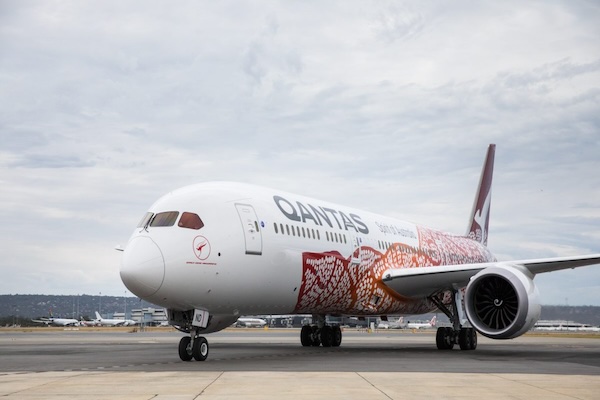Qantas is set to significantly enhance its travel offerings on the London-Brisbane route by reducing journey times by up to four hours.
With a strategic focus on better connectivity and increased capacity, Qantas aims to provide improved travel experiences and meet rising passenger demands.
Enhanced Connectivity Options
Qantas has announced plans to reduce the travel time between London and Brisbane by up to four hours. This is a significant enhancement in connectivity for passengers travelling on this popular route. By increasing the frequency of flights between Singapore and Brisbane from seven to nine return flights weekly, Qantas aims to streamline connections with its daily service between Singapore and Heathrow.
These changes are strategic, aligning with Qantas’ goals of improving customer experience and operational efficiency. The additional flights are expected to significantly enhance the overall passenger journey. By facilitating better connection times, Qantas not only improves punctuality but also boosts its service reliability, which is crucial for maintaining customer satisfaction. The strategic increase comes ahead of the southern hemisphere’s summer season when flight demand typically rises.
Increased Capacity Across Key Routes
In addition to the improved London-Brisbane route, Qantas is set to raise capacity on the Sydney-Singapore route. From December 11, the airline will operate 17 flights per week, up from the current 14. This adjustment is a response to growing passenger demand in the region, showcasing Qantas’ proactive approach to capacity management.
The capacity increase represents a 10% growth, adding 2,500 extra seats a week, subject to regulatory approvals. This strategic move reflects Qantas’ commitment to optimise its network and offer more flexible travel options to its customers.
Qantas is dedicated to tailoring its services to meet evolving passenger needs. Increasing capacity on such a vital route underlines the airline’s dedication to adapting its operations, aiming to provide enhanced customer service and convenience.
Expanding the International Network
The airline is not only focusing on existing routes but also expanding its international network.
Qantas plans to introduce a new service between Brisbane and Manila, expanding its presence in Asia. This development highlights the airline’s ambition to explore new markets and enhance tourism opportunities between Australia and the Philippines.
Furthermore, more flights are planned between Sydney and Bengaluru, with a special focus during peak travel months.
The increase in flight frequency to Bengaluru is poised to accommodate both leisure and business travellers, enhancing travel options to and from India. Such international route expansions are pivotal to Qantas’ growth strategy as they facilitate economic and cultural exchanges.
Strategic Reallocation of Resources
To facilitate these changes, Qantas has made the strategic decision to withdraw its Sydney-Shanghai route starting July 28 due to underwhelming demand. The aircraft previously serving this route will be redeployed to cater to the burgeoning demand in other Asian destinations.
This move underscores Qantas’ agility in resource management and its ability to pivot based on market needs. It reflects a strategic reallocation to optimise route efficiency and profitability.
Qantas resumed the Sydney-Shanghai service in October post-pandemic, however, it has not operated at full capacity due to lesser demand than expected. To ensure maximisation of resource utility, the airline is focusing on more lucrative routes.
Long-term Commitment to China Market
Despite the suspension of the Sydney-Shanghai route, Qantas is committed to maintaining a presence in China through its partnerships and existing flights to Hong Kong.
The airline has emphasised its readiness to re-enter the Shanghai route when market conditions improve. This cautious yet optimistic outlook indicates Qantas’ long-term commitment to fostering Australia-China ties.
Partnership and collaboration remain at the core of Qantas’ strategy, ensuring that it remains a key player in Asia-Pacific aviation.
Statements from Leadership
Cam Wallace, Qantas International CEO, stated, “We’re always looking to ensure that we have the right aircraft, on the right routes, and at the right time of year to best meet the needs of our customers.”
These statements reflect a customer-centric approach, driven by data and market trends. The strategy is not just about expansion, but smart, demand-driven operations that align resources with customer requirements.
The focus remains on providing quality services. As global travel dynamics continue to evolve, Qantas’ strategy is to remain adaptable while putting customers at the heart of its operations.
Conclusion
Qantas continues to refine its global network strategy, enhancing connectivity, and increasing capacity where there is demand.
These changes demonstrate a commitment to service excellence and customer satisfaction. The strategic expansions and adjustments in flight operations signify Qantas’ responsive and dynamic approach to the ever-changing aviation landscape.
These strategic changes by Qantas underscore its commitment to offering superior connectivity and service.
By expanding its international routes and optimising existing operations, Qantas showcases agility and customer-centricity in a competitive market.

